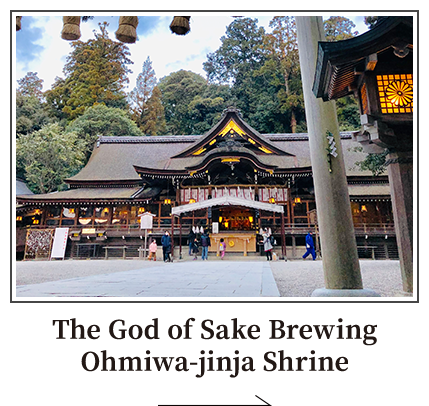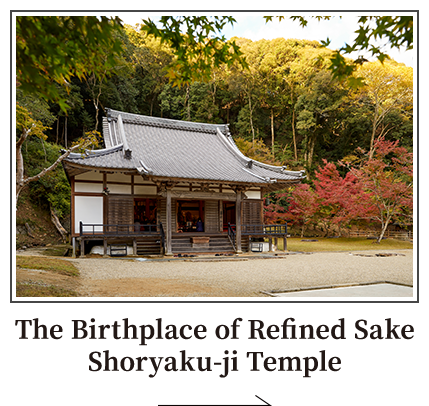 Nara and Sake
Nara and Sake
A stone monument on the grounds of Shoryaku-ji Temple marking the birthplace of refined sake.
Sake is currently experiencing another wave of popularity.
In addition to Japanese cuisine, which was inscribed as Intangible Cultural Heritage by UNESCO in 2013, traditional Japanese sake brewing was inscribed in 2024, and it seems as though non-Japanese people are also coming to appreciate sake. While it is true that sake spans generations and goes beyond national borders, you may not be aware that the Nara region has a deep relationship with sake, and long ago it was even produced at temples and shrines. In the Nara period, Miki no Tsukasa—the office controlling sake production—was located in Nara under the ritsuryo system of government, and its remnants were discovered among the remains of the Nara Palace Site. Ohmiwa-jinja Shrine, said to be Japan’s oldest shrine, enshrines the god of sake brewing, and Kasuga Taisha Shrine is home to Japan’s oldest sake brewery (an Important Cultural Property), where sake production continues to this day.
Sake was also brewed at Shoryaku-ji Temple in the Bodaisencho area of Nara City. In the late 1980s, it was suggested that Shoryaku-ji Temple may actually be the birthplace of refined sake. In these ways, Nara’s temples and shrines served as focal points for the beginning of sake production in the area, and the area’s offices and facilities further illustrate Nara’s extremely close relationship with sake.
Let’s take a closer look at this relationship, using Ohmiwa-jinja Shrine and Shoryaku-ji Temple as examples.



